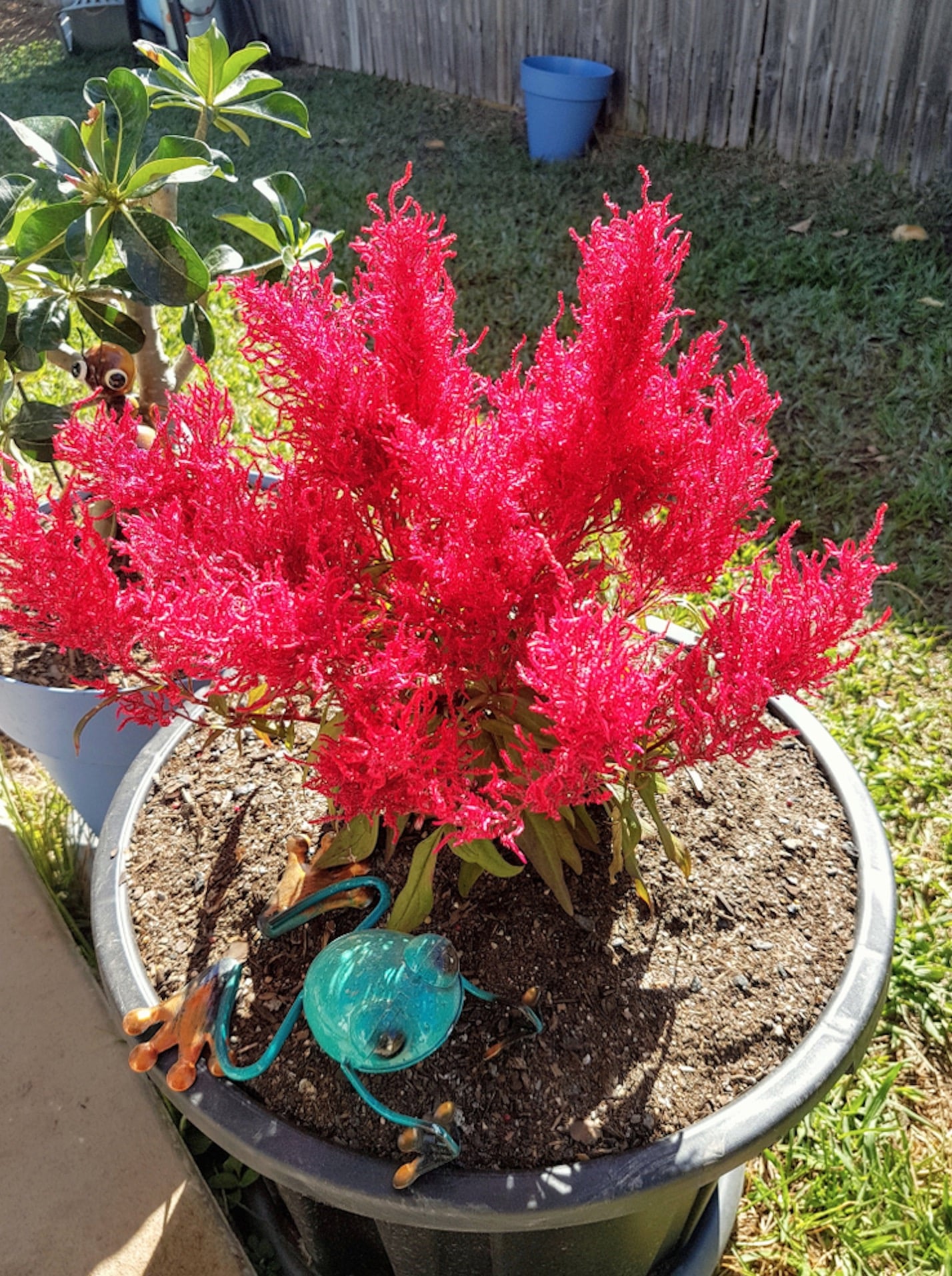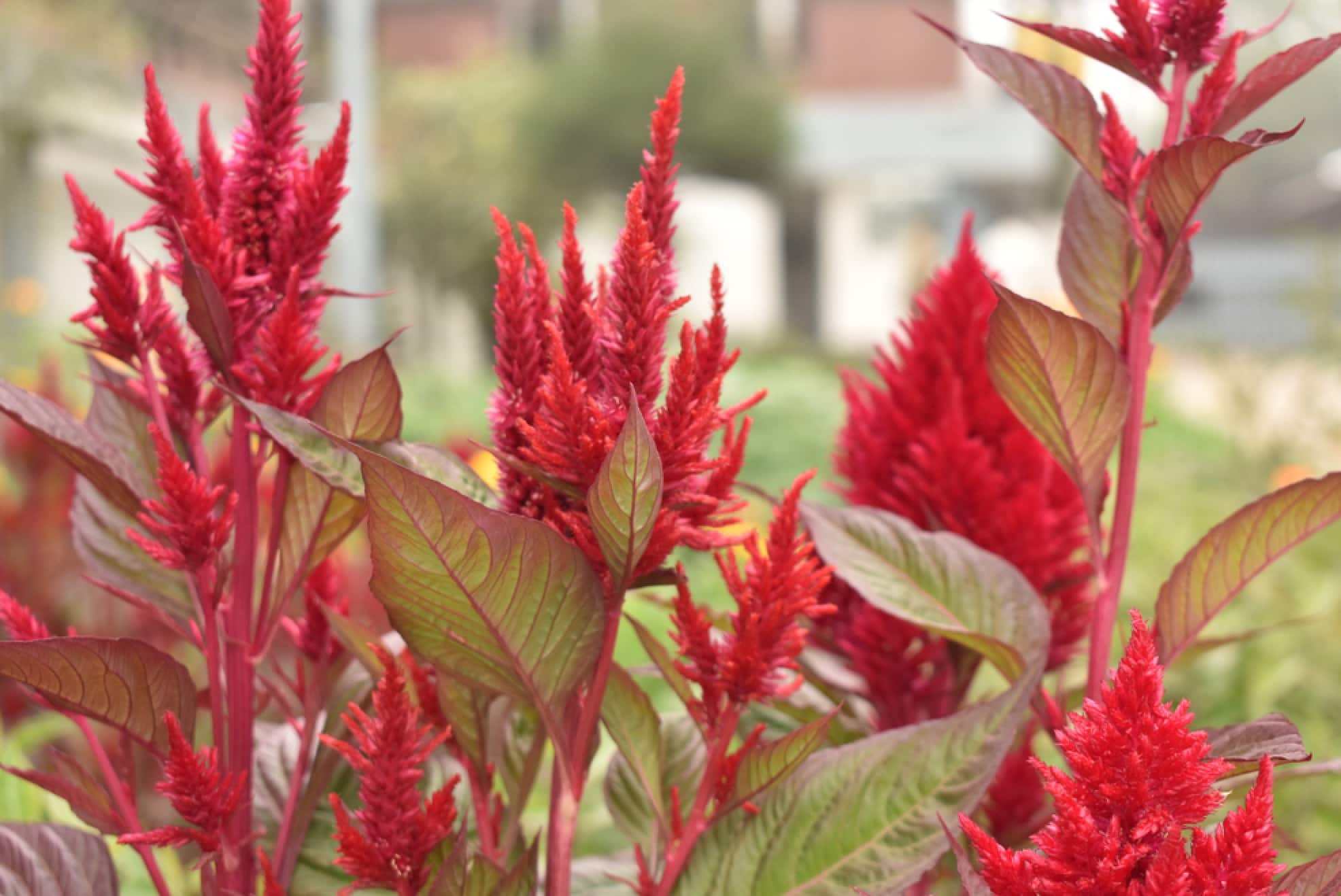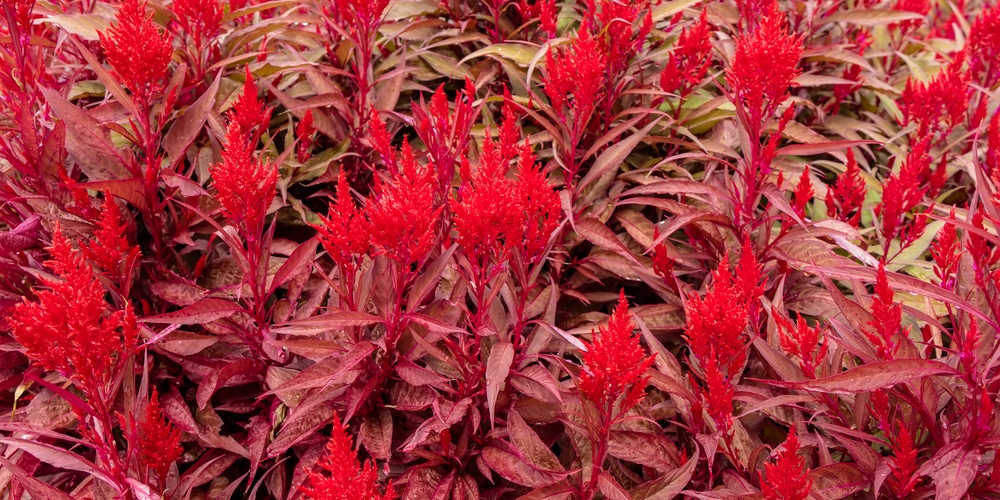Quick Info

Here’s a condensed version of what you’ll find in this article, if you don’t have the time or need to read 1000 words on this topic:
- Annual Lifespan: Dragon’s Breath is primarily considered an annual plant. This means it completes its life cycle within one year, from germination to the production of seeds. After blooming, it typically dies.
- Blooming Season: The plant showcases vibrant maroon flowers that bloom for about ten weeks on average. Proper care can extend this blooming period. It starts flowering in early spring.
- Care for Extended Life: In warmer climates (USDA zones 9 and 10), Dragon’s Breath can last a few years before needing replanting. Regular watering, especially for younger plants, and pruning can enhance bloom duration and plant longevity.
- Overwintering Strategy: In colder climates, to preserve Dragon’s Breath through winter, you can dig up the plant before the first frost and bring it indoors. This strategy allows the plant to survive the cold months and potentially bloom again in warmer conditions.
- Growth Conditions: Dragon’s Breath prefers warm, sunny environments and well-drained soil. It can grow to between 15 and 25 inches tall. While it can be a houseplant, it thrives outdoors in direct sunlight and requires regular watering to establish, becoming drought-tolerant as it matures.
Intro (Regular Article)
Gardeners often explore the vibrant allure of Celosia ‘Dragon’s Breath’, a plant known for its striking red foliage and plume-like flowers. The question of whether Dragon’s Breath returns each year is common among enthusiasts drawn to its fiery appearance.
Typically, Dragon’s Breath is categorized as an annual plant, which means that it completes its entire lifecycle—from seed to bloom to seed—in a single growing season. In temperate climates, it does not come back on its own as the plant usually succumbs to frost.

However, in warmer regions or with protective measures, some gardeners may coax Dragon’s Breath to behave more like a perennial. This usually involves meticulous care, including proper pruning, winter protection, or propagating from cuttings or seeds to initiate new growth each year.
Although the plant itself may not survive the winter to regrow from the same roots, strategic cultivation can lead to a stunning display of Dragon’s Breath year after year.
Key Takeaways
- Dragon’s Breath is generally considered an annual plant, completing its lifecycle in one season.
- In warmer climates or with careful maintenance, it can be cultivated to enjoy annually.
- Propagation methods are crucial for those seeking to have Dragon’s Breath in their garden each year.
- Has there ever been such a radiantly beautiful celosia? This variegated cockscomb offers red-hot plumes above olive-green leaves edged in and shot with red accents. A late-flowering variety, it holds beautifully, thrives in heat...
- Dragon's Breath is a magnificent presence in the annual bed, patio pot, and vase. It grows quickly and flowers over a long, late season, extending the glory of the celosias into fall. And there is simply nothing like it in terms...
- Reaching 2 feet high in bloom, Dragon's Breath actually increases its leaf and flower production in hot, humid weather, and likes its soil on the dry side. Many container annuals simply cannot last in the punishing conditions of...
- The variegated foliage is another boon, keeping Dragon's Breath handsome both before and after bloom as well as during its long show of color.
- Dragon's Breath seed does best when direct sown, and once it has germinated, it would rather not be moved. Sow the seed outdoors well after all danger of frost has passed, setting it just ⅛-inch deep and covering lightly. It...
Dragon’s Breath: 101
The Dragon’s Breath plant, known for its fiery-hued foliage, is a subject of discussion regarding its life cycle. Whether it returns annually depends on its growing conditions and botanical classification.
Botanical Classification
- Family: Amaranthaceae
- Genus: Celosia
- Species: Celosia argentea
- Cultivar: ‘Dragon’s Breath’
Plant Characteristics
Growth Habit: The Dragon’s Breath plant is typically grown as an annual, which means gardeners plant it anew each spring.
Floral Display: It showcases plumes of maroon flowers that can add visual interest to garden spaces throughout its blooming season in spring and summer.
Foliage: The leaves of ‘Dragon’s Breath’ are notable for their bright red to deep maroon color, which brings a pop of color even when the plant is not in bloom.
Climate Adaptability: In warmer climates, this plant may act as a short-lived perennial, able to survive mild winters; however, in colder areas, it behaves as an annual because it cannot withstand frost.
How to Make Your Dragon’s Breath Thrive
In the cultivation of Dragon’s Breath, gardeners should focus on two primary factors: meeting the plant’s soil preferences and providing the right balance of sunlight and water. These elements are critical for the plant’s annual blooming cycle and overall health.
Soil Requirements
Dragon’s Breath plants thrive in well-draining soil. The ideal soil mix should consist of:
- Loamy soil
- Organic matter, such as compost or peat moss, to promote fertility
It is important to ensure the soil’s pH level remains between 6.0 and 7.0, which is slightly acidic to neutral.
Sunlight and Watering Needs
For optimal growth, Dragon’s Breath requires:
Sunlight:
- At least 6 hours of direct sunlight daily
Watering:
- Consistent watering in the plant’s early stages, allowing soil to dry slightly between watering sessions
- Once established, it’s more drought-tolerant, but ensure ample water during prolonged dry spells to encourage flowering
Propagation and Maintenance
To ensure the vigorous growth of the Dragon’s Breath plant, understanding the proper methods for propagation and yearly care is essential. These steps will aid in promoting the full potential of the plant’s vibrant foliage and flowers.
Propagation Methods
Propagation of the Dragon’s Breath plant, scientifically known as Celosia, is typically done through seeds or cuttings. For successful seed propagation, one should:
- Sow seeds: Seeds can be started indoors 4-6 weeks before the last expected frost. Use a light seed-starting mix and maintain a temperature of approximately 70°F (21°C) for optimal germination.
- Planting: Transplant seedlings outdoors once the danger of frost has passed and the soil has warmed.
Cuttings should be:
- Taken from a healthy parent plant using a sharp, sterile knife or scissors.
- Placed in a rooting medium and kept under appropriate conditions for root development.
Annual Maintenance
For annual maintenance, the Dragon’s Breath requires attention to several factors:
- Sunlight: They thrive in full sun with at least 6 hours of direct sunlight per day.
- Soil: A well-draining soil is crucial to prevent root rot and other moisture-related issues.
- Watering: Water the plants when the top inch of soil feels dry to the touch, avoiding overwatering.
- Fertilization: A balanced liquid fertilizer can be applied once a month during the growing season to support robust growth.
- Pruning: Regular removal of spent flowers, or deadheading, encourages further blooming and maintains plant appearance.
Frequently Asked Questions
This section provides essential insights into the care and characteristics of the Dragon’s Breath plant, addressing common concerns and offering guidance for its successful cultivation.
Is the Dragon’s Breath plant considered a perennial or an annual?
The Dragon’s Breath plant is typically grown as an annual. However, in warmer climates, it may survive as a perennial. Gardeners should note the plant’s success greatly depends on local climate conditions.
What are the winter care requirements for the Dragon’s Breath plant?
In colder regions where it’s treated as an annual, winter care involves protecting the seeds or new plants indoors. As a perennial in warm areas, it should be mulched to protect its roots from the cold.
Are there any toxicity concerns with the Dragon’s Breath plant for pets?
It’s advisable to research specific plants for any possible toxicity risks. In general, gardeners should exercise caution and possibly consult with a veterinarian about the plants they grow if pets are present.
What conditions can cause a Dragon’s Breath plant to die?
Exposure to prolonged frost, overwatering, and poor soil drainage can be fatal to the Dragon’s Breath plant as these conditions are contrary to its growing requirements.
How can a wilted Dragon’s Breath plant be revitalized?
Revitalizing a wilted Dragon’s Breath plant often involves adjusting the watering schedule and ensuring that it receives ample sunlight and proper nutrients through balanced fertilization.
What are the best practices for planting Dragon’s Breath in the garden?
Ideal practices include placing the Dragon’s Breath plant in a location with full sun to partial shade and in well-draining soil. Provide moderate water and occasional fertilization to encourage vibrant blooms.
Last update on 2025-06-06 / Affiliate links / Images from Amazon Product Advertising API


